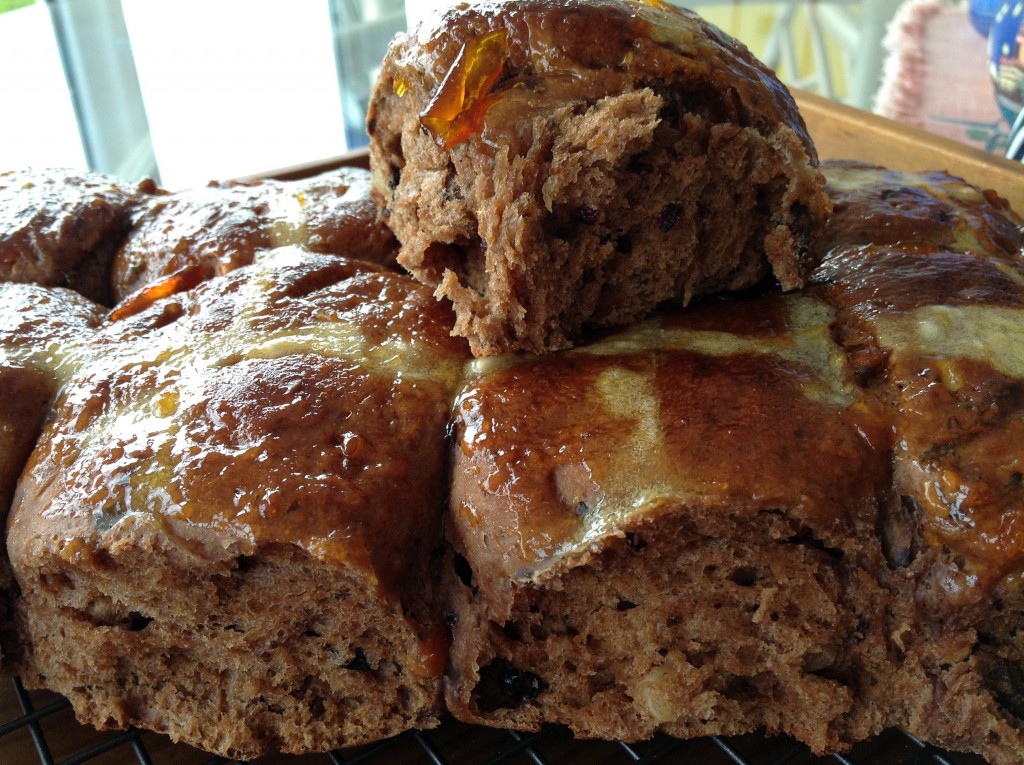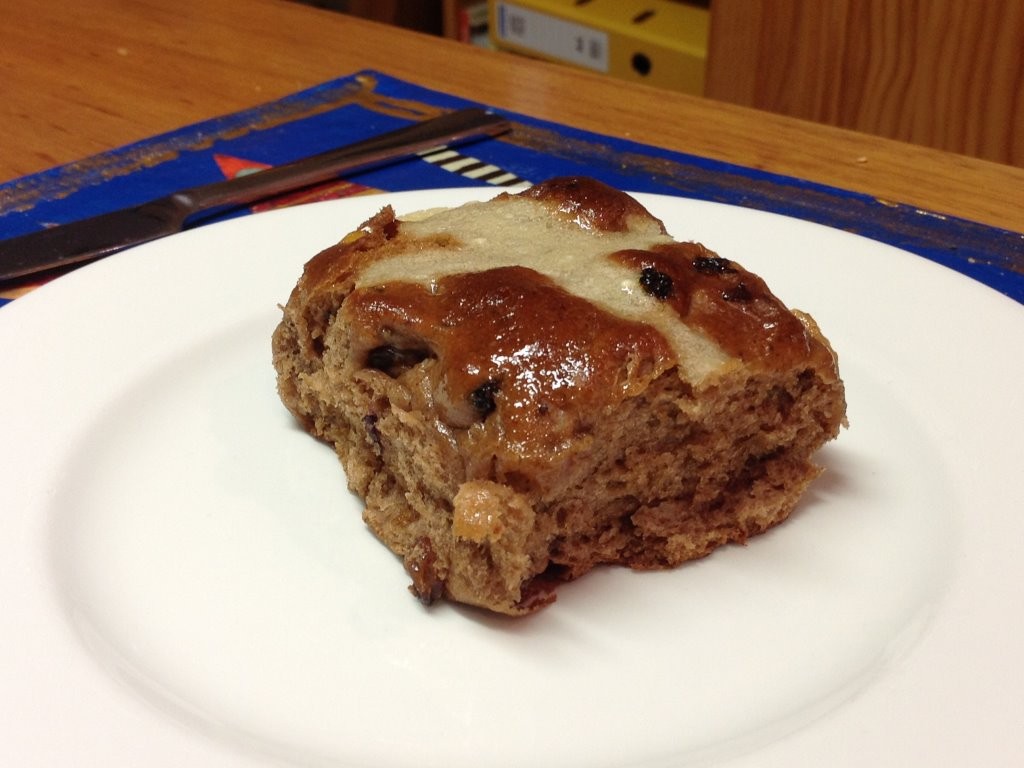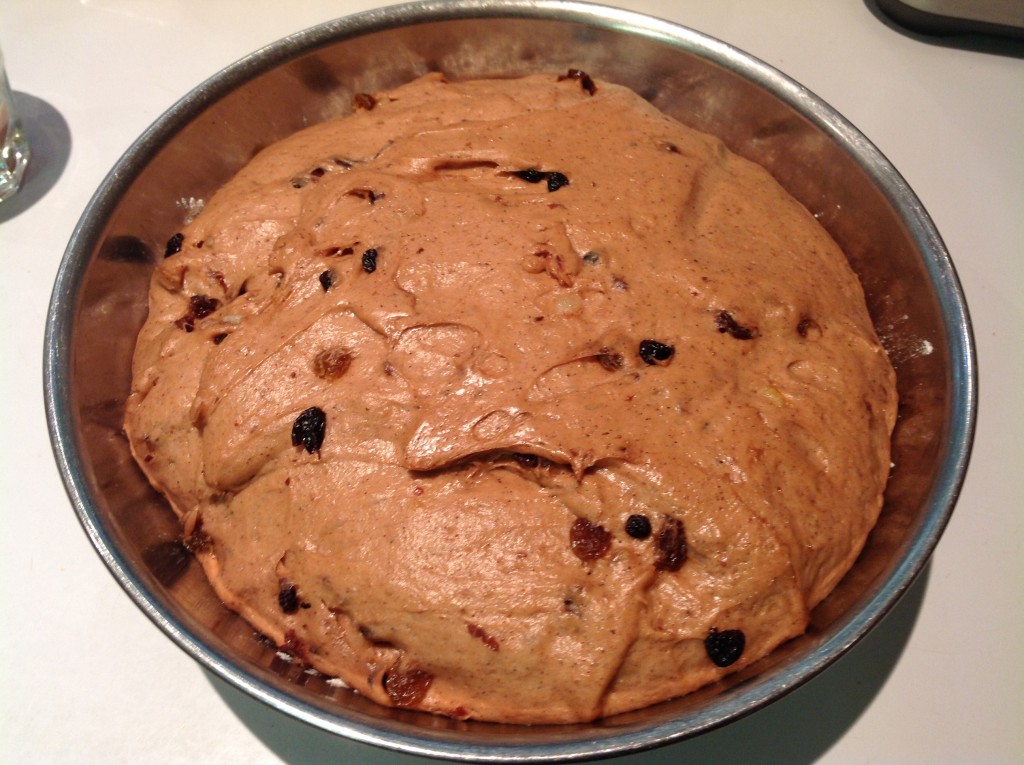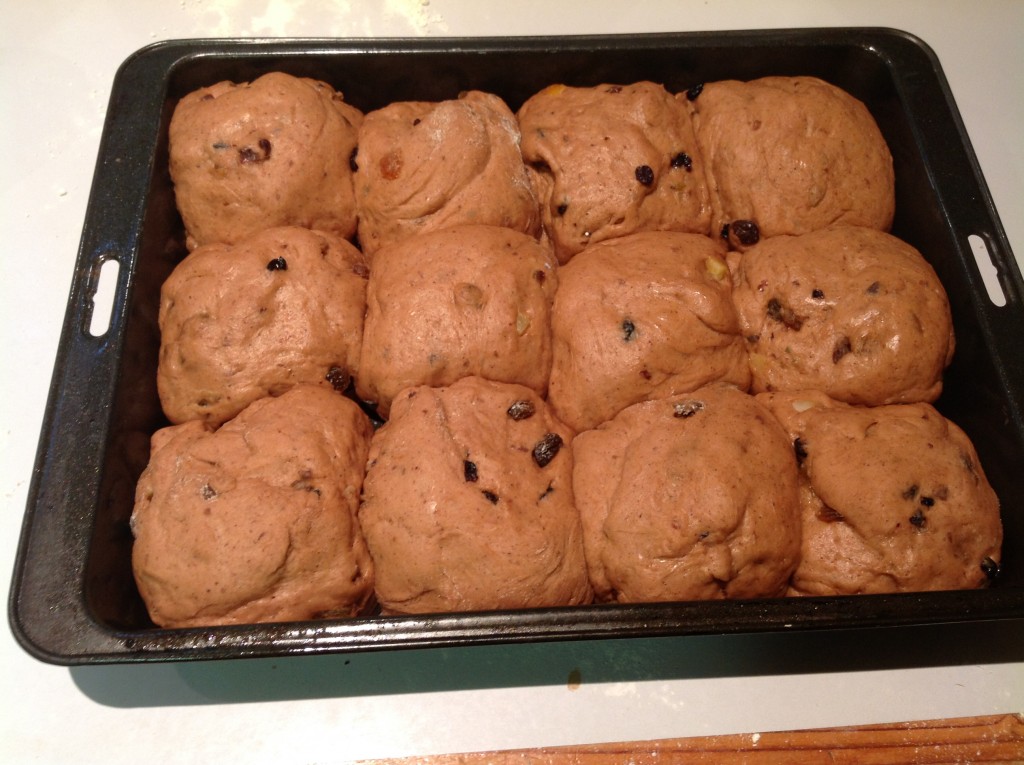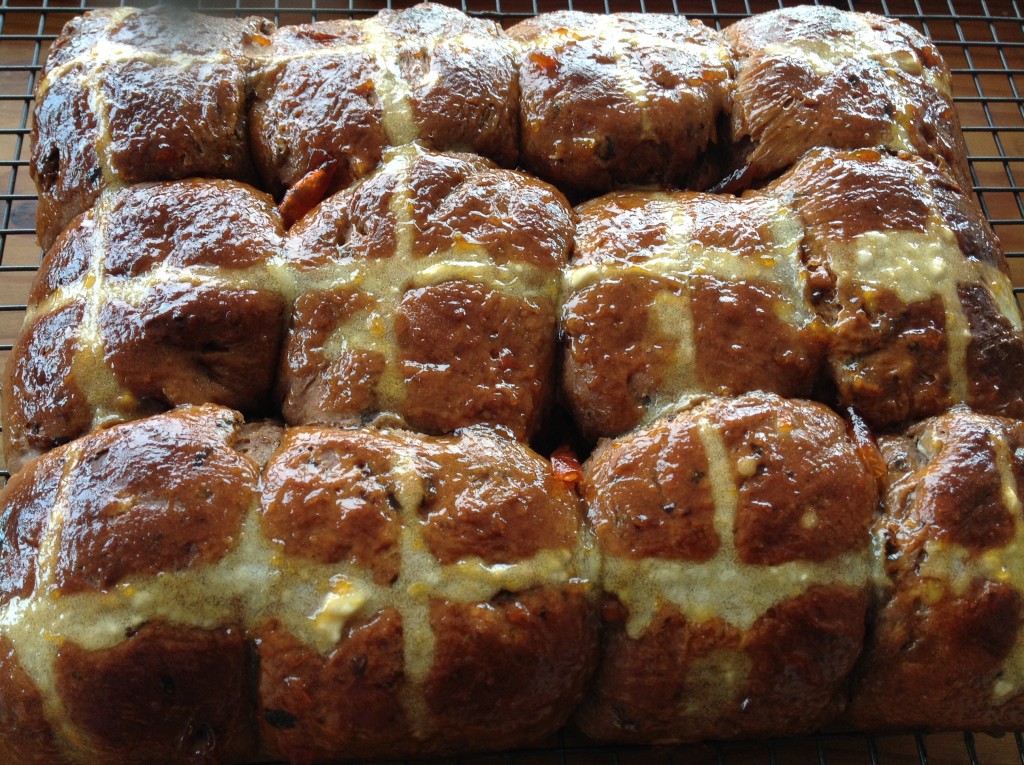For many of us, Easter means chocolate eggs and hot cross buns.
We can’t tell you how to make Easter eggs, but here is a photo of some. It was taken on a boat called Coral II when we were in the Galapagos Islands during Easter last year!
We can, however, give you our version of hot cross buns: these were cooked this morning, Easter Friday.
For many years I had unsuccessfully tried to make hot cross buns and had given up after too many results that were heavy, rock hard, boring, or worse. However, a fortnight or so before Easter two years ago I was lamenting to a friend about lack of success in the hot cross bun arena. He had had similar disappointing experiences. I decided to try and get to the bottom of how to produce a lighter version. There is no doubt that baking is a real skill. There is much involved: knowledge about ingredients, knowledge about yeast cookery, kneading and proofing skills for breads or similar, the need for correct quantities, the necessary patience, etc.
By the time Easter 2014 arrived, through trial and error, we had come up with a recipe that we were pretty happy with. And that same recipe can be used any time of the year for fruit buns – just leave the crosses off. You can have beautiful buns any time!
Hot cross buns are special and require some time and effort. Allow up to three hours before you will be eating them, though some of the preparation can be done well beforehand.
If you want to give them a go – and they really are worth the effort – the link to the detailed recipe can be found at the end of this post. However, some further comments and photos might be of assistance. The reward will be this:
Tracking down the right kind of flour for buns, bread and cinnamon rolls!
To get a light airy result you must use the right kind of flour. Using just plain flour in the past has always produced heavy, rock-cake-like hot cross buns. However, “strong, plain flour” gives the light airy result closer to what you get from bakeries. Strong flour is made from harder grain than plain white flour and has a higher gluten content. The extra gluten, which is a form of protein, provides extra stretch or elasticity to dough, enabling air to be trapped as bubbles resulting in a better rise, with a greater volume and lighter texture in the final result. Look for flours that have 11% to 13% protein or gluten content. (Use normal plain flour, with less protein, for baked products that don’t require this airy result, that is, for pastries, tarts, and most cakes.)
You might find strong white flour hard to find, particularly if you don’t want any additives. And it is not clear about what is what. Thus, is “strong white flour” the same as “bread flour”? It is very difficult to get an answer to this question – finding an answer for what applies in the UK or USA is of little use for products sold in Australia. It is possible that something marketed as “bread flour” might have a whole heap of additives that you aren’t interested in ingesting.
After some practice with different types of flour, I have decided to use only the Lighthouse brand and in particular the “Bread and Pizza” version http://www.lighthousebaking.com.au/. It should be available in the bigger supermarkets. The “Bread and Pizza” flour comes in a convenient 1 kg packet. It is marked as “strong, high protein plain flour” and ideal “for bread loaves, dinner rolls and pizza bases”. The packet states that it is 100% Australian unbleached wheat flour and the protein content is 11.5%. I have been very happy with the results from this flour.
Making the buns
The buns are made in several steps, illustrated by photos below:
- first make the dough and let it rise
- form the dough into balls and let them rise
- make the crosses using a flour batter
- bake the buns
- finish with a sugar glaze
The bun dough is made up of three groups of ingredients:
- the fruit
- the dry ingredients (including spices)
- the wet ingredients
The dough should become sticky and stretchy. Here we have used a mixer to do the kneading for us – doing it by hand would be a challenge but rewarding.
Place dough in a bowl to rise. Don’t be too concerned if the dough is even stickier than this.
Allow it to double in size but not much more; less than this should still be fine.
The dough is formed into balls. Place the balls of dough in a suitable tray
Allow to rise against each other.
Pour on the crosses, lengthwise and crosswise. This photo is from an early attempt where we used a pouring jug; a piping bag or substitute will give a finer result.
After baking and glazing you should have something like this:
You are after a light, fluffy result as indicated in the earlier photos. However, they might not be as light and fluffy as store-bought ones – who knows what ingredients are used to give that result. Hopefully you will be delighted by your homemade versions.
For the recipe, click here: Hot Cross Buns
Contributions welcomed!
If you have your own great recipe or any improvements to our version, please be in touch.



